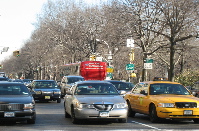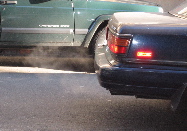There was a scare in the air in New York City on Monday morning. The cable and local tv stations were all over the story. The cause was a so-called mystery odor permeating the air. Was it a biological weapons attack? Was it cancer-causing chemicals? Mayor Michael Bloomberg was quick to announce that the odor was not harmful, yet the actual source of the smell is still a mystery; fingers now point to New Jersey. But the media frenzy over this tiny blip of an environmental air concern was — as usual — overwrought.
The media likes to attract viewers and that means sensationalizing the so-called news. Only when it seems like there is some sort of instantaneous event, i.e., a bad smell, that vast media coverage is warranted. Cable and local TV news are the worst offenders because they have so much airtime needed to be filled. They jump on events like mystery odors because it actually gives them something to do, something to talk about, something to — ahem — fill the air with.
Every day there are more harmful, non-odorous toxic pollutants spewed into the air than during the few hours this mystery odor was smelled. Anyone living in the city is breathing in carbon monoxide emitted from the thousands of vehicles driven daily. Anyone who opens his or her apartment windows can see evidence of polluted air in the form of little black particles that blow in and dirty up the sill. These same black particles and toxic gases are breathed in every minute, every hour, every day that you are alive. Where is the media report about that?

According to the Environmental Protection Agency (EPA), there are six common air pollutants: ozone, nitrogen dioxide, carbon monoxide, particulate matter, sulfur dioxide, and lead. Breathing in any of these pollutants isn't good for you. They can cause anything from neurological disorders to asthma or ultimately death.
Carbon monoxide is a poisonous gas released primarily from vehicles. It is odorless yet you breathe it in everyday, and in concentrated amounts it can be fatal. Not only is this gas dangerous to you, it also has caused the "greenhouse effect" that has led to global warming.

The federal Clean Air Act of 1990 put caps on vehicle emissions levels and has had success in reducing the amount of carbon monoxide blown into the air. According to the EPA, in 1992 — only 15 years ago — carbon monoxide levels "exceeded" these emissions caps in 20 cities, which meant that more than 14 million people were overexposed to this harmful gas.

Even though emissions levels of carbon monoxide have fallen significantly under the Clean Air Act regulations, clean, non-polluted air is still not what the vast majority of Americans breathe everyday. What you don't smell is much more dangerous and definitely warrants more media coverage than one half-day mystery odor.
keeping the earth ever green
- Follow us on Twitter: @inthefray
- Comment on stories or like us on Facebook
- Subscribe to our free email newsletter
- Send us your writing, photography, or artwork
- Republish our Creative Commons-licensed content

